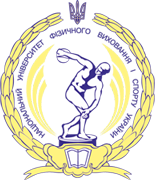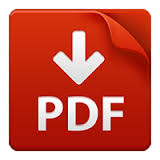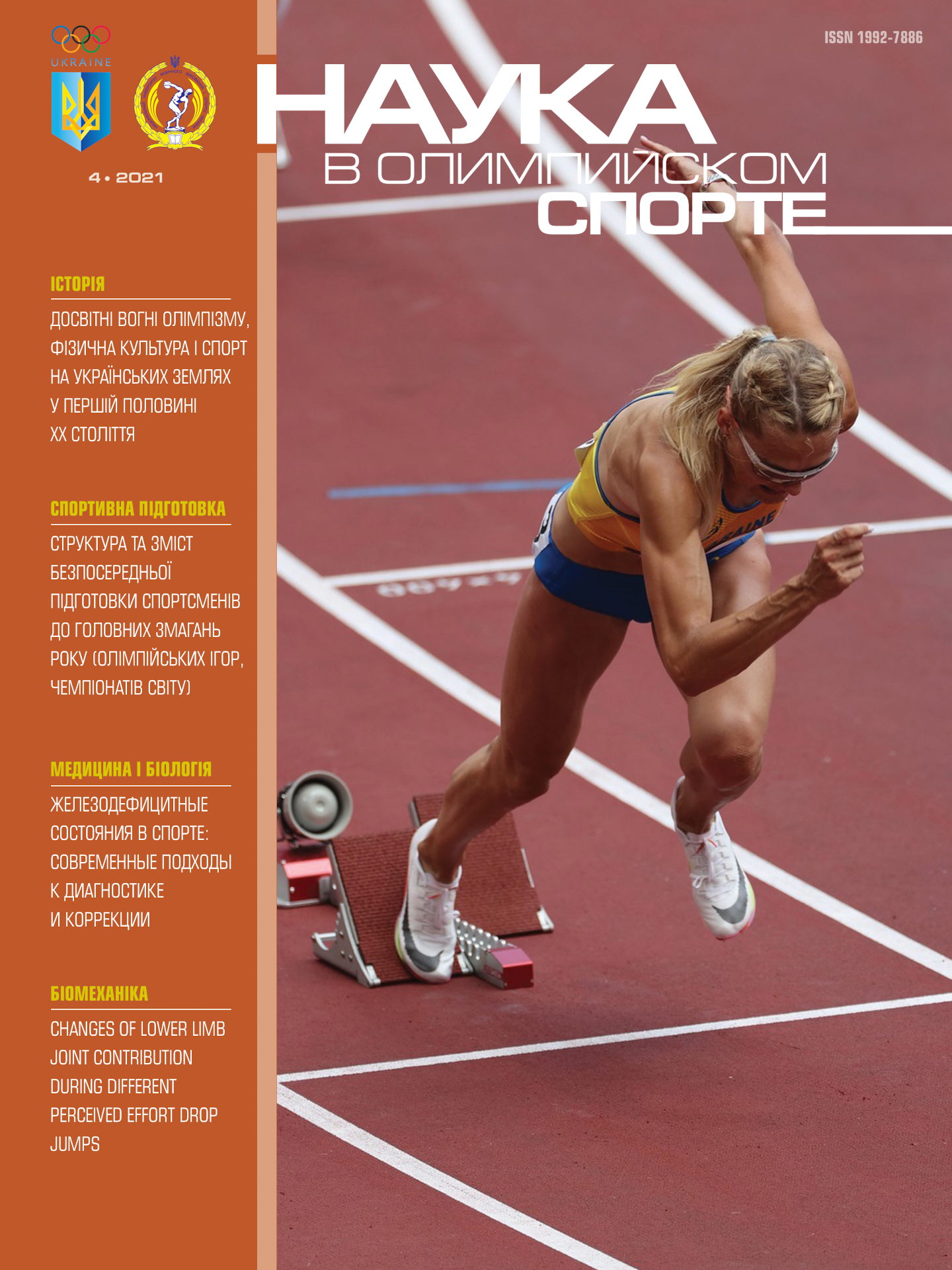doi: 10.32652/olympic2020.3_4
Існує три види управління тренувальним процесом: оперативне, поточне і етапне. При організації управління враховується наявність об’єктивних методів контролю за функціональними можливостями спортсменів, їх готовністю до напруженої тренувальної чи змагальної діяльності, протіканням у них процесів стомлення, відновлення, розвитку адаптаційних реакцій, появи ознак перевтоми, перетренованості та ін.
Мета. Визначити роль пульсометрії при управлінні тренувальним процесом в карате.
Методи. Контроль забезпечували вимірюванням ЧСС за допомогою пульсометрів «Polar Team». У дослідженні взяли участь сім спортсменів (майстри спорту міжнародного класу) збірної команди Республіки Казахстан з карате.
Результати. Сучасні методи безперервного вимірювання ЧСС в умовах реальної спортивної діяльності, відпочинку або сну дозволяють отримати важливу і об’єктивну інформацію про стан організму спортсмена, його реакції на тренувальні та змагальні навантаження, протікання відновних процесів, розвиток втоми, перевтоми, перетренованості, перебування в умовах середньогір’я і високогір’я, спеки та холоду, емоційний стрес та ін. Нашими дослідженнями показано, що моніторинг ЧСС під час сну і рано вранці після пробудження, поряд з такими показниками, як якість сну і самопочуття, дозволяє оцінити протікання адаптаційних реакцій і контролю за відновними процесами після виконання програм тренувальних занять чи їх серій. Висновки. Під час тренувального процесу ЧСС дозволяє управляти параметрами тренувального навантаження (тривалість, інтенсивність, режим роботи і відпочинку та ін.) з метою досягнення запланованої реакції організму, управління адаптаційними реакціями, профілактики перевтоми і травм, дозволяє оцінити динаміку розвитку тренованості, ступінь відновлення після попереднього навантаження, готовність до чергових тренувальних навантажень або змагальної діяльності.
Література:
1. Волков НИ, Несен ЭН, Осипенко АА, Корсун СН. Биохимия мышечной деятельности. [Biochemistry of muscular activity]Киев: Олимп. лит., 2000. 504 с.
2. Матвеев ЛП. Основы общей теории спорта и системы подготовки спортсменов. [Bases of general sports theory and athlete preparation system] Киев: Олимпийская литература, 1999. 320 с.
3. Матвеев ЛП. Общая теория спорта и ее прикладные аспекты: учебник для вузов физической культуры. [General sports theory and its applied aspects] [5-е изд.]. Москва: Советский спорт, 2010. 340 с.
4. Платонов ВН, Гуськов СИ. Олимпийский спорт [в 2 кн.]. [Olympic sport] Киев: Олимпийская литература, 1997. Кн. 2. 384 с.
5. Платонов ВН. Система подготовки спортсменов в олимпийском спорте: общая теория и ее практические приложения. [System of athletes’ preparation in the Olympic sport. General theory and its practical applications]Киев: Олимп. лит., 2004. 808 с.
6. Платонов ВН. Система подготовки спортсменов в олимпийском спорте. Общая теория и ее практические приложения [System of athletes’ preparation in the Olympic sport. General theory and its practical applications] [учебник для тренеров: в 2 кн.]. Киев: Олимп. лит., 2015. Кн. 2. 752 с.
7. Сили РР, Стивенс ТД, Тейт Ф. Анатомия и физиология [Anatomy and physiology] [в кн.; пер. с англ. Г. Гончаренко]. Киев: Олимп. лит., 2007. 662 с.
8. Шустин БН. Моделирование и прогнозирование в системе спортивной подготовки. В кн.: Современная система спортивной подготовки. [Modeling and predicting in sports preparation system.]Москва: СААМ, 1995. С. 226-237.
9. Benson R, Connolly D. Heart rate training [2nd ed.]. Champaign, IL: Human Kinetics, 2020. 258 p.
10. Borresen J, Lambert MI. The quantification of training load, the training response and the effect on performance. Sports Med. 2009;39(9):779-95.
11. Buchheit M, Chivot A, Parouty J, Mercier D, Al Haddad H, Laursen PB, et al. Monitoring endurance running performance using cardiac parasympathetic function. Eur J Appl Physiol. 2010;108:1153-67.
12. Buchheit M, Laursen P, Stanley J, Plews D, Haddad H, Lacome M, Simpson B, Saw A. Response to load. In: Laursen P, Buchheit M. Science and application of highintensity interval training: solutions to the programming puzzle. Champaign, IL: Human Kinetics, 2019:179-212.
13. Castagna C, Impellizzeri FM, Chaouachi A. et al. Physiological responses to ball-drills in regional level male basketball players. Journal of Sports Sciences. 2011;29(12):1329-36.
14. Flatt AA, Esco MR. Validity of the ithleteTM smart phone application for determining ultra-short-term heart rate variability. Journal of Human Kinetics. 2013;39:85-92.
15. Fox EL, Bower RW, Foss ML. The physiological basis for exercise and sport. Madison, Dubuque: Brown and Denchmark, 1993. 710 p.
16. French D. Adaptations to anaerobic training programs. In: G. G. Haff, N. T. Triplett, eds., Essentials of strength training and conditioning [4th ed.]. Champaign, IL: Human Kinetics, 2016: 87-114.
17. French D. Combat sports. In: Laursen P, Buchheit M. Science and application of highintensity interval training: solutions to the programming puzzle. Champaign, IL: Human Kinetics, 2019: 227-46.
18. Halson SL, Jeukendrup AE. Does overtraining exist? An analysis of overreaching and overtraining research. Sports Medicine. 2004;34:967-81.
19. Hautala AJ, Kiviniemi AM, Tulppo MP. Individual responses to aerobic exercise: The role of the autonomic nervous system. Neurosci Biobehav Rev. 2009;33(2):107-15.
20. Hill-Haas SV, Dawson В, Impellizzeri FM, Coutts AJ. Physiology of small-sided games training in football: a systematic review. Sports Medicine. 2011;41(3):199-220.
21. Kenney LW, Wilmore JH, Costill DL. Physiology of sport and exercise. Champaign: Human Kinetics, 2012. 621 p.
22. Kreher JB. Diagnosis and prevention of overtraining syndrome: An opinion on education strategies. Open Access J Sports Med. 2016;7:115-22.
23. Laursen P, Buchheit M. Science and application of high-intensity interval training: solutions to the programming puzzle. Champaign, IL: Human Kinetics, 2019. 664 p.
24. Le Meur Y, Duffield R, Skein M. Sleep. In: C. Hausswirth, J. Mujika, eds., Recovery for performance in sport [1st ed.]. Champaign: Human Kinetics, 2013: 99-110.
25. Le Meur Y, Buchheit M, Aubry A, Coutts AJ, Hausswirth C. Assessing overreaching with heart-rate recovery: What is the minimal exercise intensity required? Int J Sports Physiol Perform. 2017;12(4):569-73.
26. Maffetone Ph, Laursen P, Buchheit M. HIIT and its influence on stress, fatigue, and athlete health. In: Laursen P, Buchheit M, ed. Science and application of highintensity interval training: solutions to the programming puzzle. Champaign, IL: Human Kinetics, 2019:137-59.
27. Maglischo EW. Swimming fastest [3rd ed.]. Champain, IL: Human Kinetics, 2003. 800 p.
28. Mann T, Lamberts RP, Lambert ML. Methods of prescribing relative exercise intensity: Physiological and practical considerations. Sports Med. 2013;43(7):613-25.
29. Martin D. Generating anaerobic power. In: D. Joyce, D. Lewindon, eds., Highperformance training for sports [1st ed.]. Champaign, IL: Human Kinetics, 2014:199- 210.
30. Meeusen R, Duclos M, Foster C. et al. Prevention, diagnosis and treatment of the overtraining syndrome: Joint consensus statement of the European College of Sport Science (ECSS) and American College of Sports Medicine (ACSM). Med Sci Sports Exer. 2013;45(1):186-205.
31. Midgley AW, McNaughton LR, Carroll S. Time at VO2max during intermittent treadmill running: Test protocol dependent or methodological artefact? Int J Sports Med. 2007;28(11):934-9.
32. Parrado E, Garcia MA, Ramos J, Cervantes JC, Rodas G, Capdevila L. Comparison of Omega Wave System and Polar S810i to detect R-R intervals at rest. Int J Sports Med. 2010;31(5):336-41.
33. Plews DJ, Laursen PB, Kilding AE, Buchheit M. Training adaptation and heart rate variability in elite endurance athletes - opening the door to effective monitoring. Sports Med. 2013;43(9):773-81.
34. Robergs RA, Roberts SO. Fisiologia do Exercicio. Sao Paulo: Phorte Editora, 2002. 490 p.
35. Robergs RA, Ghiasvand F, Parker D. Biochemistry of exercise-induced metabolic acidosis. Am J Physiol Regul Integr Comp Physiol. 2004;287: 502-16.
36. Scott TJ, Black CR, Quinn J, Coutts AJ. Validity and reliability of the session-RPE method for quantifying training in Australian football: A comparison of the CR10 and CR100 scales. J Strength Cond Res. 2013;27(l):270-6.
37. Stanley J, Peake JM, Buchheit M. Cardiac parasympathetic reactivation following exercise: Implications for training prescription. Sports Med. 2013;43(12):1259-77.
38. Stanley J, Cavalheiro CA. Road running. In: Laursen P, Buchheit M. Science and application of high-intensity interval training: solutions to the programming puzzle. Champaign, IL: Human Kinetics, 2019: 283-96.
39. Swank A, Sharp C. Adaptations to aerobic endurance training programs. In: G. G. Haff, N. T. Triplett, eds. Essentials of strength training and conditioning [4th ed.]. Champaign, IL: Human Kinetics, 2016: 115-34.
40. Urbanchek J. Jon Urbanchek, coach of Tom Dolan Olympic gold medalist 400 individual medley. The World Swimming Coaches Association Gold Medal Clinic Series. Fort Lauderdale, FL.: World Swimming Coaches Association, 1998;2:97-104.
41. Wilmore JH, Costill DL. Physiology of sport and exercise. Champaign, IL: Human Kinetics, 2004. 726 p.
42. Wilmore JH, Costill D, Kenney WL. Physiology of sport and exercise. [4th ed.]. Champaign, IL: Human Kinetics, 2009. 529 p.
Отримано: 26.10.2020













